Features
Keep an Eye on Bassist Damian Erskine
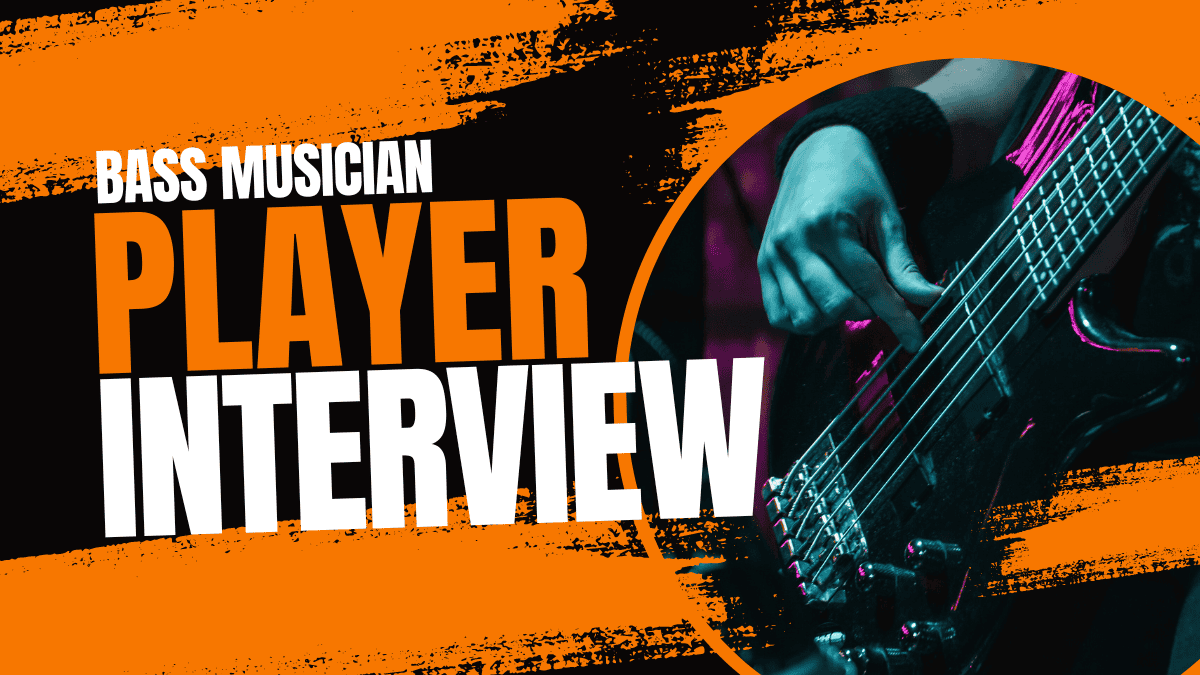
Damian Erskine is hitting the bass world hard with the release of his solo debut “Trios”, as well as a growing tour schedule. Beyond that, he keeps busy with clinics, private lessons, and has put together an instructional book called “Erskine Bass Perspective”. I had the opportunity to sit down for a virtual chat with this talented musician…
[Jake] Give me a little history on yourself. I know you have some interesting stories
about your early days coming up as a player.
[Damian] My grandfather started me on the bass at around age six. He loaded me up with transcriptions, books with tapes (minus bass tracks) to play with, and Rufus Reid’s books. He had me working on pretty difficult stuff like “Teen Town,” “Donna Lee,” and anything he could find by Jaco Pastorius, along with solos by Eddie Gomez. He was a seriously hip guy with a strong work ethic. He forced me to work on scales daily.
Initially, I always viewed the bass as something I was forced to do because my real love was the drums which I discovered when I was ten years old. My uncle, drummer Peter Erskine, was generous to give me a Slingerland kit, and my family was generous enough to let me go absolutely nuts in the basement for hours on end. The coolest thing my family did for me was drive me to New York from South Jersey frequently on weekends to watch Peter play with a variety of the best guys in the city at 7th Ave. South which was a club owned, I believe, by the Brecker brothers. I got to see Jaco’s Word of Mouth Band, Bob Mintzer’s Big Band, John Scofield, John Abercrombie, Marc Johnson, and Weather Report among other well known musicians. I was one lucky kid!
Eventually, I started to to get really attracted to the bass because of some Weather Report albums my mom had (did I mention that my family was really cool?!). Jaco did it for me. I couldn’t get enough of Jaco or Scofield’s “Blue Matter”. My grandfather was always giving me tapes of things Peter gave him, so I had a pretty styling tape collection for a kid.
[Jake] Your solo debut CD sounds great. Tell me about the players involved, and what persuaded you to use a trio format.
[Damian] Thank you! The disc is primarily the collaborative effort of two of my favorite musicians in Portland, Pianist Ramsey Embick and drummer Reinhardt Melz. I’ve been lucky enough to play quite a bit with these virtuosos and I just love the way we connect when we play, no matter what style it is, but, especially when we play latin tinged jazz. These guys just lift this music to a whole ‘nother level! There are also a few tracks with Flamenco guitarist Toshi Onizuka and African drummer, Israel Annoh. I play quite a bit with these guys at a local restaurant when I’m in town and we just have such a good time, I had to put a few tracks in there with them as well. World-class guys!
I’ve always enjoyed the trio format over most any other (except for a big horn section, maybe!). I just love the interplay that can develop. There’s so much room for interaction with three people and I especially love the piano trio. It just seems to have such potential, musically.
[Jake] I enjoyed the multiple techniques you employed on your CD, such as muting, and a flamingo style approach. What inspired you to add these techniques to your playing.
[Damian] A number of things led to the development of some of my current techniques. I’ve always enjoyed playing chords on the 6-string bass, which led to some thumb development (as I use the thumb to play the lower notes of a chord, typically). Beyond that, I’ve always loved the sound I get when I mute just a little bit with my palm back by the bridge, but I never liked the way I was handicapped by the necessary right hand position.
I started experimenting with using my pinky to mute by the bridge saddles (which also serves as a pretty solid anchor, by the way) and I came to a technique where I rest the tip of my pinky on the string I am playing and bend the knuckle over to also mute the 2 higher strings above it! This also puts my right hand in a more classical guitar like hand position which naturally lends itself to a more thumb inclusive finger style.
Ultimately, it led to me muting VERY often with my pinky and me using my thumb, index and middle fingers quite a bit (I use my ring finger occasionally for fast triplet style percussive attacks). Somewhat similar to Dominique DiPiazza but not with any finger picks and using only downstrokes with my thumb.
I admit, I also started stealing techniques from Toshi Onizuka at our flamenco gigs. He is such a percussive player and I (being a lover of all things rhythmic) had no choice but to try and emulate him when I would take my solos… almost as a kind of game. I just couldn’t help trying to copy what he was doing and then Israel would jump in and we would just chase each other around the song… It became quite fun and the audience always got a kick out of it as well, so I wound up developing some more flamenco style rhythmic vocabularies.. Although, I’m not able to play with true flamenco technique, I can only emulate the sound and rhythms.
[Jake] Seems like you’ve done well as far as developing a “voice” for yourself this early in the game. What do you think you might attribute that to.
[Damian] That’s a tricky one. I was never able to do things exactly as other people did them on the bass, BUT I would always make it a point to investigate my own ways of doing something I heard, if I liked it. For example, I LOVED Victor Wooten’s playing in College (still do!) but it never felt comfortable for me to slap. So I took the rhythmic aspects of his playing that I liked and tried to apply them to a more finger style way of doing it. I still got to learn and transcribe a bunch of his tunes, but wound up developing my own technical vocabulary in the process. I think the key is always focusing on making things feel good to you both internally and physically. If something didn’t feel good to me musically, I wouldn’t bother with it (but NEVER out of laziness!)
I also tried very hard to fit into any musical situation that might come my way and always tried to do it with authenticity. BUT, I always wanted to make sure I had fun doing it. At the same time, I always focused on trying to make things feel good to me AND the rest of the band AND the audience. It’s always important to me to lock in with the drummer as tightly as possible. I think a big advantage I have is having spent so many years as a drummer. I tend to have pretty good instincts and abilities when it comes to following drummer and getting “like-minded” with them.
[Jake] What sort of setup do you use for recording and also playing shows?
[Damian] I am always playing my Zon Sonus bass. It’s basically a Todd Johnson signature model with 26 frets, an extended cutaway, and some further modifications. I had Zon place both pickups further back towards the bridge to emulate what I usually did on older basses with my blend knob. Zon is also making me a 4-string version of the bass which I am very excited to receive. I always use my Aguilar DB 750 head with either my Aguilar GS 410 speaker cabinet for big shows or my Aguilar GS 112 cabinet for small gigs. In larger venues, I’ll usually place a microphone in front of my rig to get a fuller sound than most DI’s provide. I also use D’Addario strings exclusively and Planet Waves cables.
When I record my bass, I usually use two channels. I mic the rig to one channel while I run my Aguilar DI to the other channel. It’s a great sounding combination. I don’t really use any effects except for the occasional octave pedal or envelope filter. I do love my Boss Loop Station for teaching and practicing.
Basically, I’ve obsessed over my tone and have always looked for reliable gear that would allow me to get the full range of tones I want from just my fingers. I don’t like to go overboard on the equalization. I just want a nice tube preamp sound with small tweaks here and there, but I mostly like to use my fingers to get the sound I hear.
[Jake] Aside from your local gigs and sessions, are there any other projects that your excited about right now?
[Damian] Definitely! This summer, in particular, is going to be a blast. I’ve been invited to play at the “Ultimate Bass Concert” at the Jazz School, in Berkeley, CA. It’s being put on by Zon Guitars, Accugroove Cabinets, Gelb Guitars and “Bass & Beyond”. It will include solo performances by myself, Michael Manring, Ray Riendeau, Todd Johnson & Jonni Lightfoot as well as a full ‘on jam’ session at the end. Should be fun! I’ll also be teaching at both the SF Bass Weekend and the National Guitar Workshop rock summit in Seattle this summer.
Immediately following the SF Bass Weekend, I’ll be flying to Toronto to work with “Lots Wife” (phenominal rapper/poet) and Kate Schutt (beautiful singer/songwriter and Novax 8-string guitarist!). That’ll feature myself and Terri Lyne Carrington on drums (very excited to play with her, finally).
As if that wasn’t enough, I’ve also spent most of the year thus far touring with Banjo/slide guitarist Tony Furtado. In July, we’ll continue on down the road to a handful of festivals on the west coast including High Sierra, Targhee Americana and Folk Festival and a bunch more up and down the coast.
[Jake] And what gear are you endorsing?
[Damian]
Basses: Zon Sonus 4 & 6 string basses with extended cutaway, 26 frets and custom radiused pickups by Bartolini.
Head: Aguilar DB750
Cabs: Aguilar 112 & 410 cabs
Strings: D’Addario “EXL170” Nickel Wound strings
I also endorse Planet Wave cables and Gruvgear’s “V-Cart”
For more information on Damian Erskine, visit www.damianerskine.com
Features
Alberto Rigoni On Unexpected Lullabies
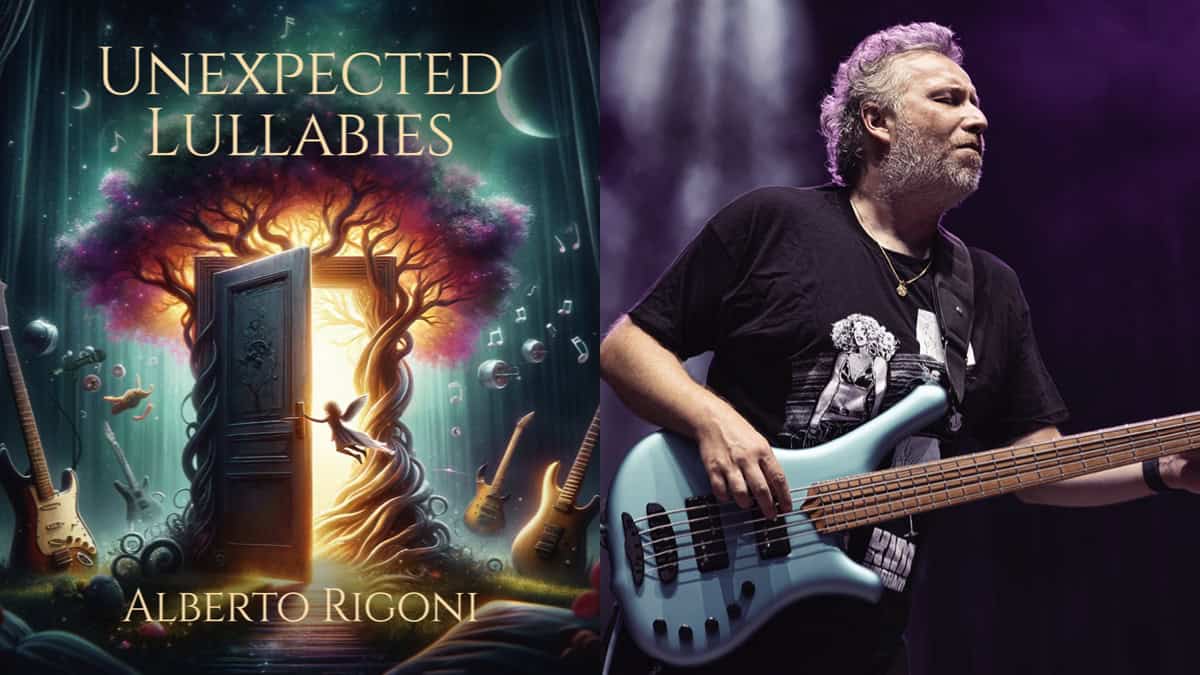
Readers have been fans of the composer, bass player, and Bass Musician contributor Alberto Rigoni for some time now.
In this interview, we had the opportunity to hear directly from Alberto about his love of music and a project near and dear to his heart, “Unexpected Lullabies”…
Could you tell our readers what makes your band different from other artists?
In 2005, I felt the urge to write original music. My first track was “Trying to Forget,” an instrumental piece with multiple bass layers (rhythm, solo, and arrangement), similar to the Twin Peaks soundtrack. When I played it for a few people, they really liked it, and I decided to continue composing based on my instinct and ear without adhering to any specific genre. In 2007, I released “Something Different” with Lion Music. The title says it all! Since then, I’ve released many solo albums, each different from the others, ranging from ambient to prog, fusion, jazz, and new age. I am very eclectic!
How did you get involved in this crazy world of music?
As a child, I listened to the music my parents enjoyed: my dad loved classical music, while my mom was into Pink Floyd, Genesis, Duran Duran, etc. These influences left a significant mark on my life. However, the turning point came at 15 when a drummer friend played me “A Change of Seasons” by Dream Theater, which was a shock! From that moment, I decided to play bass and cover Dream Theater songs, which I did for many years with my cover band, Ascra, until it disbanded in 2004. After that, I joined TwinSpirits (prog rock) led by multi-instrumentalist Daniele Liverani. Since then, I haven’t played any more covers!
Who are your musical inspirations, and what inspired the album and the songs?
My roots are in progressive rock metal, with influences from bands like Dream Theater, Symphony X, and many others. However, I listen to all genres and try to keep an open mind, which helps me compose original music. On bass, I was significantly inspired by Michael Manring and Randy Coven (bassist of Ark, Steve Vai, etc.). But I don’t have a real idol; I just follow my own path without compromise.
What are your interests outside of music?
Living in Italy, I love good food and wine! Beyond that, I have a deep interest in art in general and history, not just of my country. I enjoy spending time with friends, skiing, biking, and walking in nature. This is how I spend my free time. The rest of my time is devoted to music and my family!
Tell us about the new album.
It is definitely an out-of-the-box album. When I found out last year that I was going to have a baby girl, I decided to compose a sort of lullaby album, but I didn’t want to cover already famous lullabies. So, I started composing new tunes with the goal of creating an album that was half-sweet and half-hard rock. I did include some covers like “Strangers in the Night” by Frank Sinatra, sung by Goran Edman, former lead singer of Malmsteen. It’s not exactly a lullaby, but I felt the lyrics fit the album, as does the instrumental version of “Fly Me to The Moon.” There are also tracks with just bass and piano (Nenia) or two basses (Vicky). It was definitely an interesting creative process!
What is the difference between the new album and your previous releases, and will there be any new material from your other outfit called BAD AS?
BAD AS is essentially a metal band with several influences including prog. My solo genre is quite different, although there are some metal songs on a few albums. It’s always difficult for me to categorize my music… let’s say it’s a mix of prog, ambient, fusion, and new age.
Where was the album recorded, who produced it, and how long did the process take?
I produced my last album entirely by myself, including mixing and mastering. Unlike other albums I’ve produced within a few months, this one took much longer, perhaps because I was very busy or maybe because I wanted it to be perfect for my daughter, who is now three months old. In any case, I am satisfied. Once again, I did something different from my previous albums.
What is the highlight of the album for you and why?
My favorite song is the first track titled “Vittoria,” named after my daughter. It’s the intro to the record and isn’t very long, but the melody stuck in my head. Another standout track is the instrumental version of “Fly Me to The Moon” by Frank Sinatra, where I used fretless bass. The first part is sweet, the second part definitely rocks!
How are the live shows going, and what are you and the band hoping to achieve?
With BAD AS, this year we shared the stage with David Ellefson’s (former Megadeth bassist) band and talented young singer Dino Jelusik (White Snake). We plan to continue performing all over Europe!
What’s in store for the future?
I am working on an instrumental project called Nemesis Call, a progressive shred prog metal album with various influences. It will feature guest appearances from famous musicians like drummers Mike Terrana and Thomas Lang, as well as young talents like Japanese guitarist Keiji from Zero (19), 14-year-old Indian drummer Sajan Young, and guitarists Alexandra Zerner and Alexandra Lioness, Hellena Pandora. It’s scheduled for release at the end of the year or early 2025. As an independent artist, I have launched a fundraising campaign with exclusive pledges at www.albertorigoni.net/nemesiscall. And no, I am not begging; the album will be released anyway!
What formats is the release available in?
Unexpected Lullabies is available both as a Digipack CD and on streaming platforms.
What is the official album release date?
June 4th, 2024.
Thanks for this interview Bass Musician Magazine and for the continued support to my career!
Visit Online:
www.albertorigoni.net
www.youtube.com/albertorigoni
albertorigoni.bandcamp.com
www.instagram.com/albertorigonibassplayer
www.facebook.com/albertorigonimusic
www.tiktok.com/@albertorigonibassist
CD Track Listing:
1. Vittoria
2. Fly Me to the Moon
3. Azzurra
4. Dancing with Tears in My Eyes (feat. John Jeff Touch)
5. Out of Fear
6. Veni Laeatitia (feat. Alexandra Zerner)
7. Nenia
8. Slap Lullaby (feat. Karl Clews)
9. Saga
10. Vicky (feat. Michael Manring)
11. Ocean Travelers (feat. Vitalij Kuprij)
12. Strangers in the Night (feat. Göran Edman)
13. Peaceful
14. Un uomo che voga (feat. Eleonora Damiano)
Band Line-Up:
- Tommaso Ermolli arrangements on “Vittoria”
- Sefi Carmel on “Fly Me to the Moon” (Cover) (except for the keyboard solo by Alessandro Bertoni)
- Piano and keyboards by Alessandro Bertoni on “Azzurra”
- Leonardo Caverzan, guitars, and John Jeff Touch, vocals on “Dancing with Tears in my Eyes” (Cover)
- T. Ermolli keys on “Out of Fear”
- Alexandra Zerner everything on “Veni Laetitia”
- Daniele Bof piano on “Nenia”
- Karl Clews, piccolo bass on “Slap Lullaby”
- Jonas Erixon vocals and guitars on “Saga”
- Michael Manring bass on “Vicky”
- Vitalij Kuprij, keyboards and piano, and Josh Sapna, guitars, on “Ocean Traveler”
- Göran Edman, vocals, Emiliano Tessitore, guitars, Emiliano Bonini, drums, on “Strangers in the Night” (Cover) everything by Alberto Rigoni and vocals by Federica “Faith”
- Sciamanna on “Peaceful”
- T. Ermolli, guitars, and Eleonora Damiano, vocals, on “Un uomo che voga All drums programmed by Alberto Rigoni
Bass Books
Interview With Barker Bass’s Inventor and Writer Lee Barker
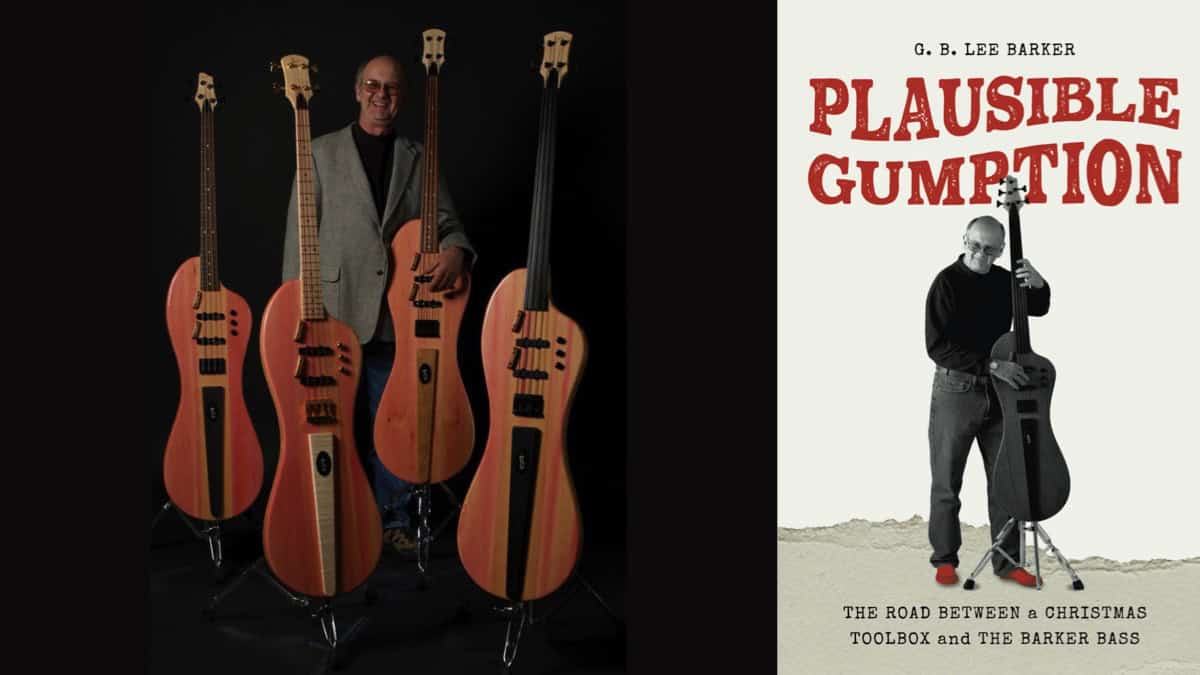
If you are an electric bass player, this is an exciting time to be alive as this relatively new instrument evolves around us. Some creative individuals have taken an active role in this evolution and made giant leaps in their own direction. Lee Barker is one of these inventive people having created the Barker Bass.
Fortunately, Lee is also an excellent writer (among so many talents) and has recently released his book “Plausible Gumption, The Road Between a Christmas Toolbox and The Barker Bass”. This book is a very fun read for everyone and shares a ton of details about Lee’s life in general, his experiences as a musician, a radio host, and a luthier. Now I am fortunate to have the great opportunity to gain even more insights into this renaissance man with this video interview.
Plausible Gumption, The Road Between a Christmas Toolbox and The Barker Bass is available online at Amazon.com
Features
Bergantino Welcomes Michael Byrnes to Their Family of Artists
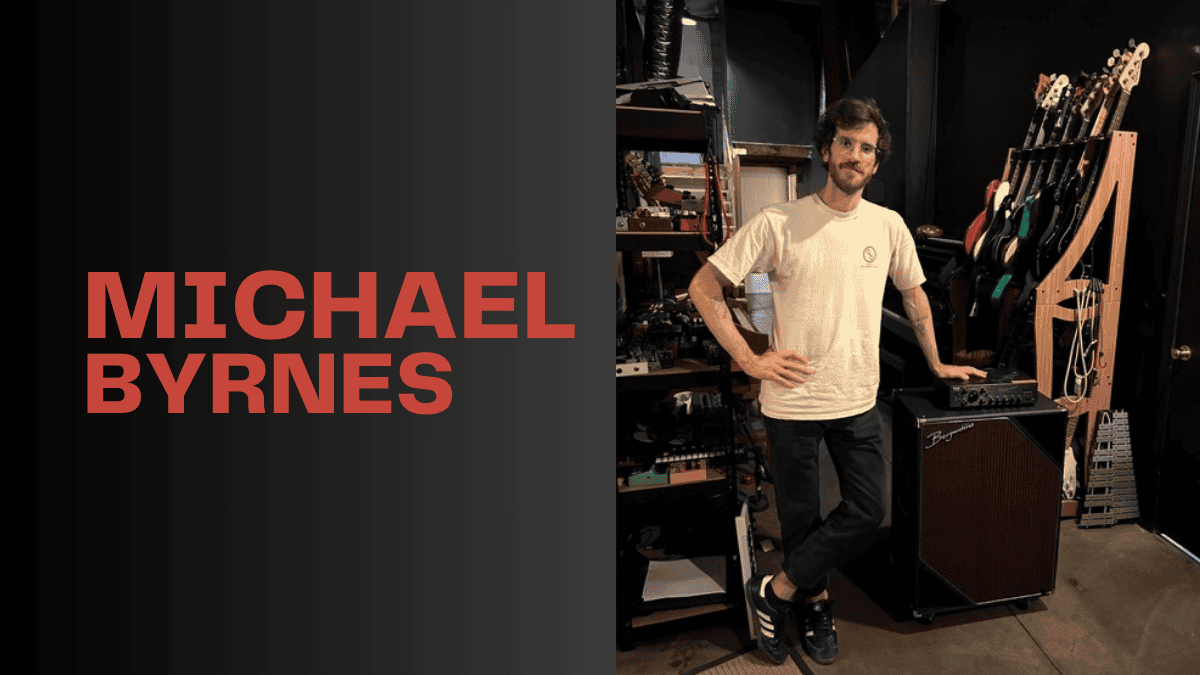
Interview and photo courtesy of Holly Bergantino of Bergantino Audio Systems
With an expansive live show and touring, Mt. Joy bassist Michael Byrnes shares his experiences with the joyful, high-energy band!
Michael Byrnes has kept quite a busy touring schedule for the past few years with his band, Mt. Joy. With a philosophy of trial and error, he’s developed quite the routines for touring, learning musical instruments, and finding the right sound. While on the road, we were fortunate to have him share his thoughts on his music, history, and path as a musician/composer.
Let’s start from the very beginning, like all good stories. What first drew
you to music as well as the bass?
My parents required my sister and I to play an instrument. I started on piano and really didn’t like it so when I wanted to quit my parents made me switch to another instrument and I chose drums. Then as I got older and started forming bands there were never any bass players. When I turned 17 I bought a bass and started getting lessons. I think with drums I loved music and I loved the idea of playing music but when I started playing bass I really got lost in it. I was completely hooked.
Can you tell us where you learned about music, singing, and composing?
A bit from teachers and school but honestly I learned the most from just going out and trying it. I still feel like most of the time I don’t know what I am doing but I do know that if I try things I will learn.
What other instruments do you play?
A bit of drums but that’s it. For composing I play a lot of things but I fake it till I make and what I can’t fake I will ask a friend!
I know you are also a composer for film and video. Can you share more
about this with us?
Pretty new to it at the moment. It is weirdly similar to the role of a bass player in the band. You are using music to emphasize and lift up the storyline. Which I feel I do with the bass in a band setting. Kind of putting my efforts into lifting the song and the other musicians on it.
Everybody loves talking about gear. How do you achieve your “fat” sound?
I just tinker till it’s fat lol. Right now solid-state amps have been helping me get there a little quicker than tube amps. That’s why I have been using the Bergantino Forté HP2 – Otherwise I have to say the cliche because it is true…. It’s in the hands.
Describe your playing style(s), tone, strengths and/or areas that you’d like
to explore on the bass.
I like to think of myself as a pretty catchy bass player. I need to ask my bandmates to confirm! But I think when improvising and writing bass parts I always am trying to sneak little earworms into the music. I want to explore 5-string more!
Who are your influences?
I can’t not mention James Jamerson. Where would any of us be if it wasn’t for him? A lesser-known bassist who had a huge effect on me is Ben Kenney. He is the second bassist in the band Incubus and his playing on the Crow Left the Murder album completely opened me up to the type of bass playing I aspire towards. When I first started playing I was really just listening to a lot of virtuosic bassists. I was loving that but I couldn’t see myself realistically playing like that. It wasn’t from a place of self-doubt I just deep down knew that wasn’t me. Ben has no problem shredding but I was struck by how much he would influence the song through smaller movements and reharmonizing underneath the band. His playing isn’t really in your face but from within the music, he could move mountains. That’s how I want to play.
What was the first bass you had? Do you still have it?
A MIM Fender Jazz and I do still have it. It’s in my studio as we speak. I rarely use it these days but I would never get rid of it.
(Every bass player’s favorite part of an interview and a read!) Tell us about
your favorite bass or basses. 🙂
I guess I would need to say that MIM Jazz bass even though I don’t play it much. I feel connected to that one. Otherwise, I have been playing lots of great amazing basses through the years. I have a Serek that I always have with me on the road (shout out Jake). Also have a 70’s Mustang that 8 times out of 10 times is what I use on recordings. Otherwise, I am always switching it up. I find that after a while the road I just cycle basses in and out. Even if I cycle out a P bass for another P bass.
What led you to Bergantino Audio Systems?
My friend and former roommate Edison is a monster bassist and he would gig with a cab of yours all the time years ago. Then when I was shopping for a solid state amp the Bergantino Forté HP2 kept popping up. Then I saw Justin Meldal Johnsen using it on tour with St. Vincent and I thought alright I’ll give it a try!
Can you share a little bit with us about your experience with the Bergantino
forte HP amplifier? I know you had this out on tour in 2023 and I am pretty
certain the forte HP has been to more countries than I have.
It has been great! I had been touring with a 70’s SVT which was great but from room to room, it was a little inconsistent. I really was picky with the type of power that we had on stage. After a while, I thought maybe it is time to just retire this to the studio. So I got that Forte because I had heard that it isn’t too far of a leap from a tube amp tone-wise. Plus I knew our crew would be much happier loading a small solid state amp over against the 60 lbs of SVT. It has sounded great and has really remained pretty much the same from night to night. Sometimes I catch myself hitting the bright switch depending on the room and occasionally I will use the drive on it.
You have recently added the new Berg NXT410-C speaker cabinet to your
arsenal. Thoughts so far?
It has sounded great in the studio. I haven’t gotten a chance to take it on the road with us but I am excited to put it through the paces!
You have been touring like a madman all over the world for the past few
years. Any touring advice for other musicians/bass players? And can I go to Dublin, Ireland with you all??
Exercise! That’s probably the number one thing I can say. Exercise is what keeps me sane on the road and helps me regulate the ups and downs of it. Please come to Dublin! I can put you on the guest list!
It’s a cool story on how the Mt. Joy band has grown so quickly! Tell us
more about Mt. Joy, how it started, where the name comes from, who the
members are and a little bit about this great group?
Our singer and guitarist knew each other in high school and have made music together off and on since. Once they both found themselves living in LA they decided to record a couple songs and put out a Craigslist ad looking for a bassist. At the time I had just moved to LA and was looking for anyone to play with. We linked up and we recorded what would become the first Mt. Joy songs in my house with my friend Caleb producing. Caleb has since produced our third album and is working on our fourth with us now. Once those songs came out we needed to form a full band to be able to do live shows. I knew our drummer from gigging around LA and a mutual friend of all of us recommended Jackie. From then on we’ve been on the road and in the studio. Even through Covid.
Describe the music style of Mt. Joy for me.
Folk Rock with Jam influences
What are your favorite songs to perform?
Always changing but right now it is ‘Let Loose’
What else do you love to do besides bass?
Exercise!
I always throw in a question about food. What is your favorite food?
I love a good chocolate croissant.
Follow Michael Byrnes:
Instagram: @mikeyblaster
Follow Mt. Joy Band:
Instagram: https://www.instagram.com/mtjoyband
Facebook: https://www.facebook.com/mtjoyband
Bass Videos
Artist Update With Mark Egan, Cross Currents
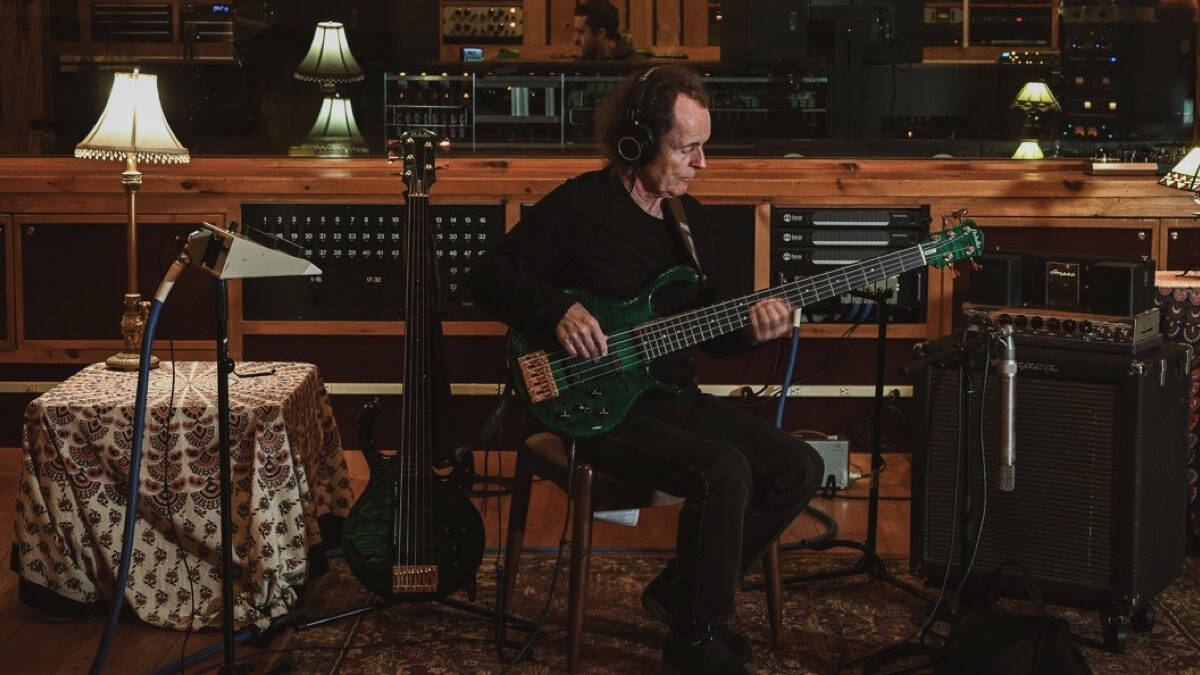
I am sure many of you are very familiar with Mark Egan as we have been following him and his music for many years now. The last time we chatted was in 2020.
Mark teamed up with drummer Shawn Pelton and guitarist Shane Theriot to produce a new album, “Cross Currents” released on March 8th, 2024. I have been listening to this album in its entirety and it is simply superb (See my review).
Now, I am excited to hear about this project from Mark himself and share this conversation with our bass community in Bass Musician Magazine.
Photo courtesy of Mark Egan
Visit Online:
markegan.com
markegan.bandcamp.com
Apple Music
Amazon Music
Bass Videos
Interview With By the Thousands Bassist Adam Sullivan
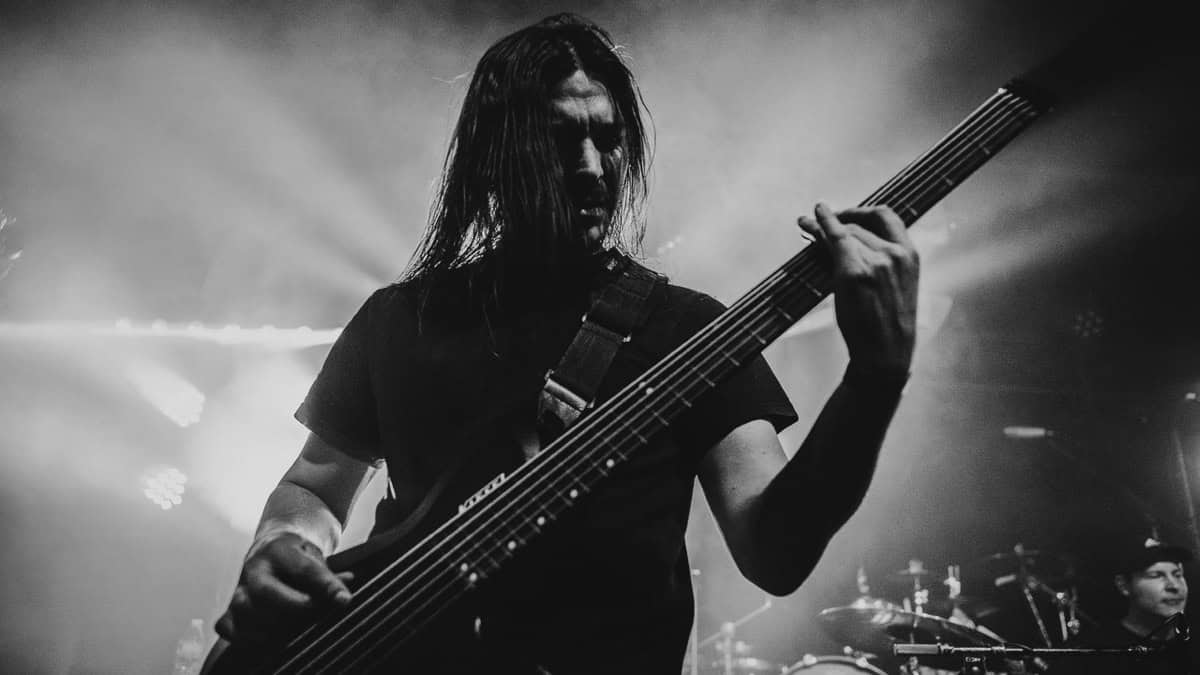
Bassist Adam Sullivan…
Hailing from Minnesota since 2012, By the Thousands has produced some serious Technical Metal/Deathcore music. Following their recent EP “The Decent”s release, I have the great opportunity to chat with bassist Adam Sullivan.
Join me as we hear about Adam’s musical Journey, his Influences, how he gets his sound, and the band’s plans for the future
Photo, Laura Baker
Featured Videos:
Follow On Social
IG &FB @bythethousands
YTB @BytheThousands





















